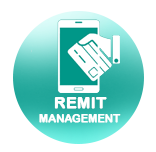
Remittance management software, also known as remittance processing software or remittance automation software, is a specialized software solution designed to streamline and automate the processing of remittances or payments received from customers. It provides comprehensive tools and features to assist businesses in efficiently managing the collection, processing, and reconciliation of remittance documents and payments.
Key Features
- Remittance Capture :- Remittance management software offers capabilities to capture remittance documents and payment information. It can process various types of payment documents, including checks, invoices, payment stubs, and electronic payment notifications. This feature enables businesses to digitize and extract relevant data from remittance documents for further processing.
- Payment Processing :- The software automates payment processing tasks, such as check scanning, electronic payment matching, and payment validation. It validates payment details, verifies payment amounts, and reconciles payments with outstanding invoices or customer accounts. This reduces manual data entry, minimizes errors, and accelerates the payment reconciliation process.
- Invoice Matching :- Remittance management software enables businesses to match remittance information with corresponding invoices or customer accounts. It automates the matching process by comparing payment details, such as invoice numbers or customer references, with the relevant invoice records. This helps ensure accurate and timely allocation of payments to the appropriate customer accounts.
- Remittance Reporting and Reconciliation :- The software generates comprehensive reports and reconciliation statements related to remittance processing. It provides insights into payment volumes, outstanding balances, exceptions, and payment trends. These reports assist in financial analysis, auditing, and identifying discrepancies or missing payments.
- Integration with Financial Systems :- Remittance management software can integrate with accounting or enterprise resource planning (ERP) systems. This integration allows for seamless data exchange, automates the transfer of payment information to financial systems, and ensures accurate and up-to-date financial records.
- Exception Handling :- The software identifies and manages exceptions or discrepancies in remittance documents and payments. It flags errors, missing information, or payment anomalies for manual review and resolution. By automating exception handling, the software reduces the time and effort required to resolve issues and ensures accurate payment processing.
- Data Security and Compliance :- Remittance management software prioritizes data security and compliance with industry regulations. It includes features such as user access controls, data encryption, and audit trails to safeguard sensitive payment information. Additionally, the software may support compliance requirements such as Payment Card Industry Data Security Standard (PCI DSS) or General Data Protection Regulation (GDPR).
Benefits of Remittance Management Software:
- Improved Efficiency :- By automating remittance processing tasks, remittance management software improves operational efficiency. It reduces manual data entry, eliminates paper-based processes, and accelerates payment reconciliation, leading to time and cost savings.
- Enhanced Accuracy :- The software minimizes errors and discrepancies in remittance processing by automating data capture, validation, and matching. It ensures accurate allocation of payments to customer accounts and reduces the risk of manual data entry mistakes.
- Faster Cash Application :- Remittance management software speeds up the cash application process by automating payment reconciliation. It reduces manual effort, enables faster identification of payment discrepancies, and facilitates timely allocation of payments to customer accounts.
- Increased Visibility :- The software provides real-time visibility into payment volumes, outstanding balances, and payment trends through comprehensive reports and dashboards. This enables businesses to monitor cash flow, identify collection bottlenecks, and make informed decisions to improve cash management.
- Better Customer Service :- With streamlined remittance processing, businesses can provide faster and more accurate responses to customer inquiries regarding payment status or invoice reconciliation. This improves customer satisfaction and strengthens customer relationships.
